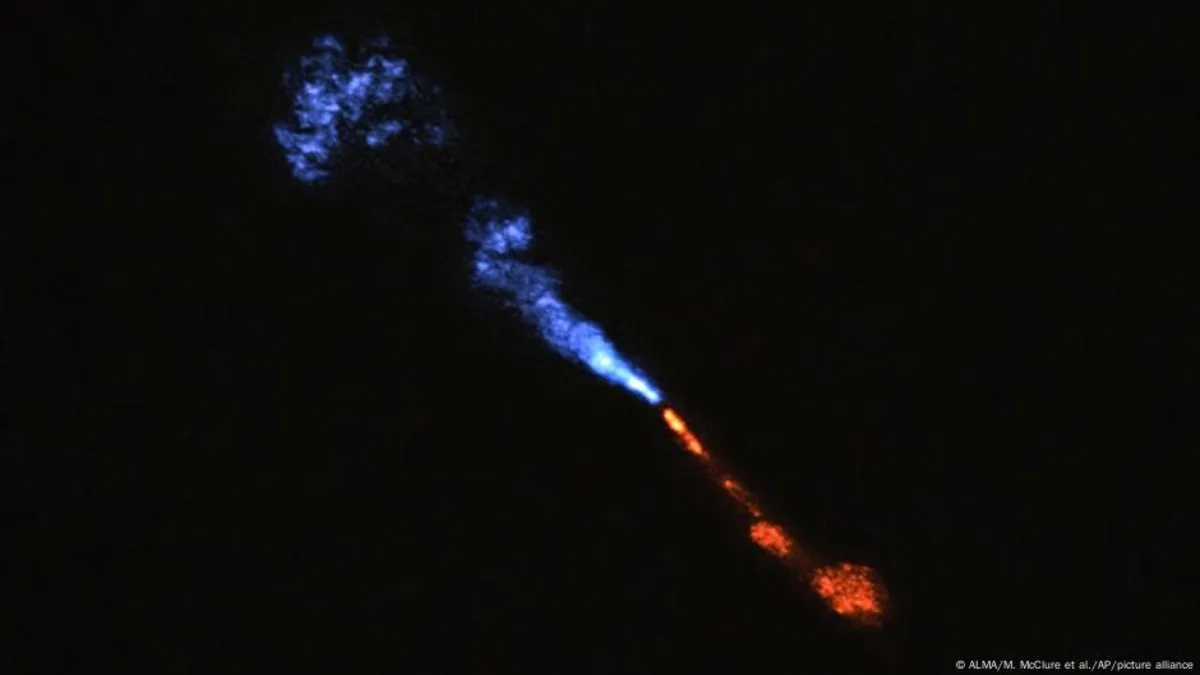
Astronomers have made a groundbreaking discovery by observing the earliest known signs of rocky planet formation around a young, sun-like star for the first time. This significant finding provides an unprecedented glimpse into what may have transpired at the dawn of our own solar system, shedding light on the processes that lead to the formation of planets.
Utilizing NASA's James Webb Space Telescope and the European Southern Observatory's ALMA array in Chile, researchers examined the gas disk encircling the infant star known as HOPS-315, located approximately 1,370 light-years away. This star, which is merely 100,000 to 200,000 years old, is still in its early developmental stages and is destined to evolve into a yellow dwarf star, akin to our sun.
"We've captured a direct glimpse of the hot region where rocky planets like Earth are born around young protostars," stated lead researcher Melissa McClure from Leiden Observatory. "For the first time, we can conclusively say that the first steps of planet formation are happening right now." McClure’s research indicates that the planet formation process might be a common occurrence during the early stages of star development.
The findings, published in the esteemed science journal Nature, reveal a glowing, lightning bug-like system set against the vast darkness of space, representing a cosmic nursery where planets may eventually form. While predicting the exact number of planets that HOPS-315 could produce remains uncertain, its expansive gas disk has the potential to support as many as eight planets, mirroring the structure of our solar system. However, this formation process may span a million years or more.
The research team was able to carry out their investigation thanks to a tilt in the star's disk and a significant gap in its outer region. These factors allowed the telescopes to detect signs of silicate minerals and silicon monoxide gas condensing, which are considered essential building blocks believed to have contributed to the formation of Earth and other rocky planets in our solar system over 4.5 billion years ago.
The activity observed occurs in a region that resembles our solar system's asteroid belt, located between Mars and Jupiter. The early-stage solids discovered had never before been directly observed in such young systems, leaving scientists questioning whether the formation of Earth was a unique event.
Fred Ciesla, a researcher from the University of Chicago who was not involved in the study, described the findings as a long-awaited breakthrough. "This is one of the things we've been waiting for," he remarked. "There's a rich opportunity here for further exploration." Astronomers are optimistic that similar discoveries will help reveal how common the planet formation process is and whether Earth-like worlds are a universal occurrence or a rare cosmic event.
Co-author Merel van't Hoff of Purdue University posed an intriguing question: "Are there Earth-like planets out there, or are we so special that we might not expect it to occur very often?" This research opens the door to a deeper understanding of our place in the cosmos and the potential for discovering other habitable worlds.